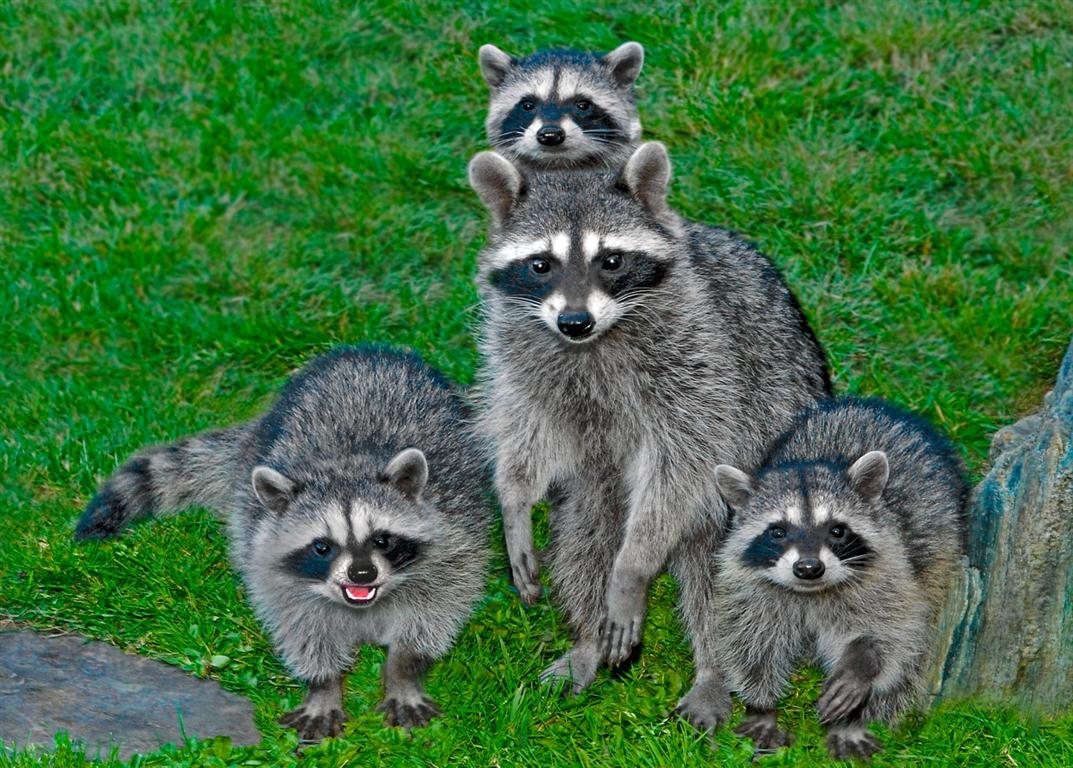.jpg)
Introduction
Raccoons are known for their mischievous nature and distinctive appearance. These adorable creatures belong to the Procyonidae family and are native to North America. With their striped tails and masked faces, raccoons have captured the hearts of people all over the world. In this article, we will explore the fascinating world of the cute raccoon family and learn more about their behavior, habitat, and unique characteristics.
Appearance
Raccoons have a distinctive appearance that sets them apart from other animals. They have a stocky build with a body length ranging from 40 to 70 cm and can weigh up to 9 kilograms. Their most recognizable feature is their black mask-like patterns around their eyes, which helps reduce glare and enhance their night vision. Raccoons also possess a bushy tail with alternating black and gray rings, which they use for balance and communication.

Habitat
Raccoons are highly adaptable creatures that can thrive in various environments. They are commonly found in forests, woodlands, and urban areas across North America. These resourceful animals are known for their ability to adapt to different habitats, including marshes, prairies, and mountains. Raccoons build their dens in tree hollows, abandoned burrows, or even in attics and chimneys of houses.

Behavior
Raccoons are nocturnal creatures, which means they are most active during the night. They have excellent night vision and a keen sense of smell, allowing them to hunt for food effectively. Raccoons are omnivorous, feeding on a wide range of food including fruits, nuts, insects, small animals, and even garbage. These clever animals are known for their ability to open containers and solve puzzles to obtain food.

Reproduction
Raccoons have a complex reproductive system. Breeding season typically occurs in late winter or early spring. Females give birth to a litter of 2 to 5 kits after a gestation period of approximately 63 days. The kits are born blind and completely dependent on their mother for the first few months. As they grow, the mother teaches them essential skills such as hunting and climbing. Raccoons reach sexual maturity at around one year of age.

Interaction with Humans
Raccoons have managed to adapt to urban environments and often interact with humans. While they may appear cute and harmless, it is important to remember that raccoons are wild animals and should not be approached or fed. They can become aggressive if they feel threatened or cornered. It is best to admire these creatures from a distance and take measures to prevent them from entering homes or causing damage to property.

Conservation
Raccoons are not considered endangered, but their populations can be affected by habitat loss and human activity. It is crucial to preserve their natural habitats and educate others about the importance of coexisting with wildlife. By taking simple steps like securing garbage cans and not feeding raccoons, we can help minimize human-wildlife conflicts and ensure the survival of these adorable creatures for future generations.

Conclusion
The cute raccoon family has captivated our hearts with their unique appearance and mischievous behavior. These resourceful creatures have adapted to various habitats and continue to thrive in both natural and urban environments. While it is important to appreciate their cuteness from a distance, we must also respect their wild nature and take steps to coexist peacefully. By understanding and conserving the habitats of raccoons, we can ensure the long-term survival of these fascinating animals.